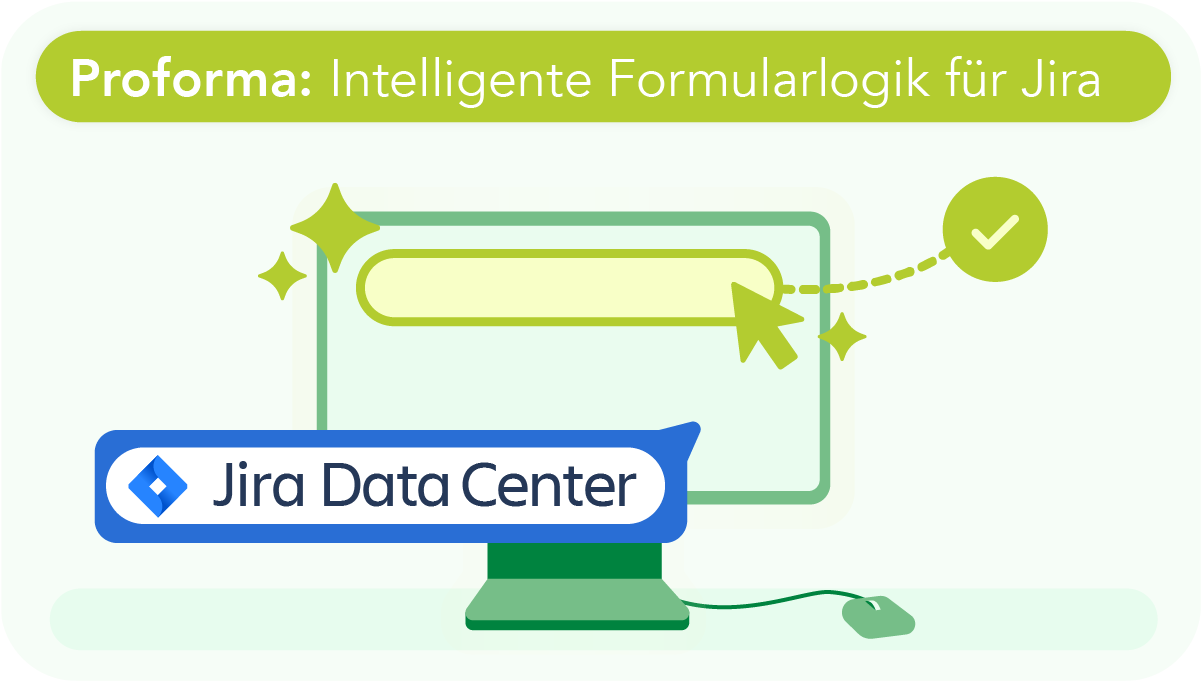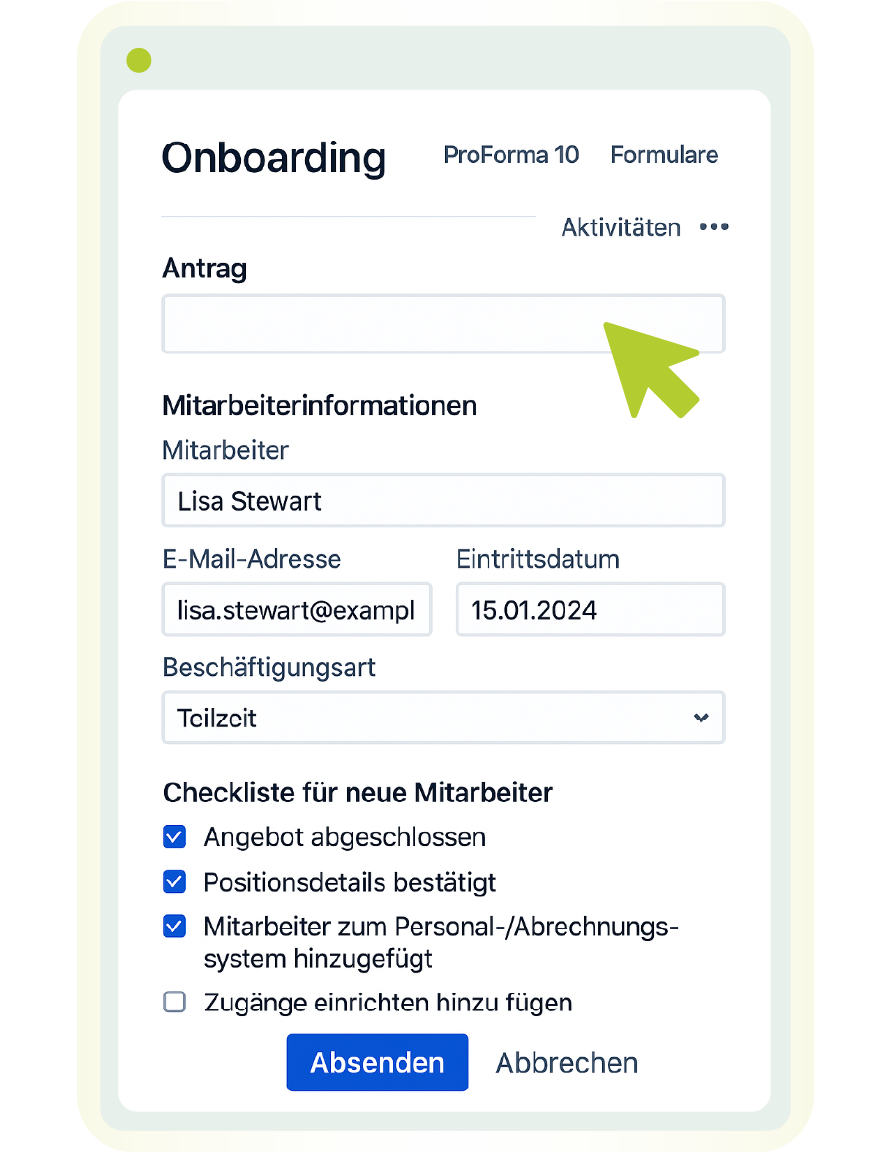
What is ProForma in Jira Service Management Data Center?
How the integrated forms work
The news that Jira Service Management Data Center integrates ProForma for free with version 10 changes the way forms are conceived within the platform. What used to be a paid plugin is now available to every company that uses Jira Service Management Data Center. The Cloud version has long included these forms. Now Data Center is following suit — without restrictions, without a licensing hurdle.
ProForma is not a tool for technical users. It is aimed at teams that structure information, standardize processes, and capture information from users in a structured, process-driven way.
A user opens a ticket, fills out a form, submits the data, and the system processes it. The core: no distractions from unnecessary configurations, no context switching. The form becomes part of the workflow.
In Jira Service Management Data Center, this means: A request is created. ProForma presents the user with an input form that guides them through the required details. Required fields, dynamic fields, help texts – all embedded in a clear layout. The technical complexity stays in the background. Only what fits the current case is visible.
ProForma: Intelligent form logic for language and structure
ProForma’s use cases don’t end with the classic request form. Onboarding processes, travel expense approvals, hardware orders – wherever structured information is collected and transferred into Jira workflows, ProForma shows its strength.
Especially when decisions need to be traceably documented, it makes sense to use a completion field. At the end of a form, there is a checkbox with a fixed wording. “I confirm the accuracy of the information.” Or: “I agree to the stated terms.” The tick replaces a signature or separate document. The confirmation flows into the ticket. The requirement to consent can be limited to certain groups, automated, or enforced – depending on the process and permissions.
Beyond that, forms can be designed intelligently. In practice, this means, first, that different language versions can be displayed depending on location – for example, German in Germany, English in the USA. Second, the same form can query different content depending on which organizational structure a user belongs to – for example, different fields for different departments. The underlying logic remains hidden within the form itself.
ProForma in Onboarding: One form, many contexts
Another example can be found in employee onboarding. The first question: For which department should the new access be set up? If the user answers “Marketing,” fields appear for advertising platforms, access to the image database, and training on the social media policy. If they answer “IT,” the form asks about system roles, admin rights, and inventory. One form – many contexts.
These dependencies are defined not by developers, but by administrators or process owners. That reduces coordination effort, saves time, and increases adoption.
A frequently stated request is: integration with Assets. This refers to Atlassian’s module for managing configuration items, formerly known as Insight. Natively, ProForma does not offer a direct link to Asset fields. Nevertheless, the connection can be made via the REST API. A prefilled field accesses the Assets database through an interface. The result: drop-down menus with real-time data, queries by inventory numbers, links to hardware or user groups.
This integration requires technical understanding – but no plugin. If you know REST, you can use the building block without additional licensing costs.

Visual inputs, clear workflows –
ProForma integrated into Jira Data Center
So ProForma means not just better forms. It stands for structured information processing in Jira. Input forms become part of the process. Data goes where it is needed. Tasks can be assigned automatically, depending on entries in the form. Responsibilities arise from the structure.
The fact that Atlassian is integrating this tool into Data Center with version 10 means for many companies: no more third-party app, no separate license, no additional effort. At the same time, Jira moves a step closer to the needs of the business units. IT administrators define interfaces and handoffs. HR, Procurement, or Legal design the input forms themselves.
The integration replaces complex workarounds. Where additional fields, conditions, and automations were previously necessary, ProForma provides a visual interface that is self-explanatory. That reduces errors, relieves support, and increases transparency.
For years, Honicon has supported companies in building Jira systems, developing efficient forms, and integrating complex data structures. Our experience shows: The best forms are those that adapt without overwhelming. ProForma delivers exactly that – now also free for Jira Service Management Data Center.